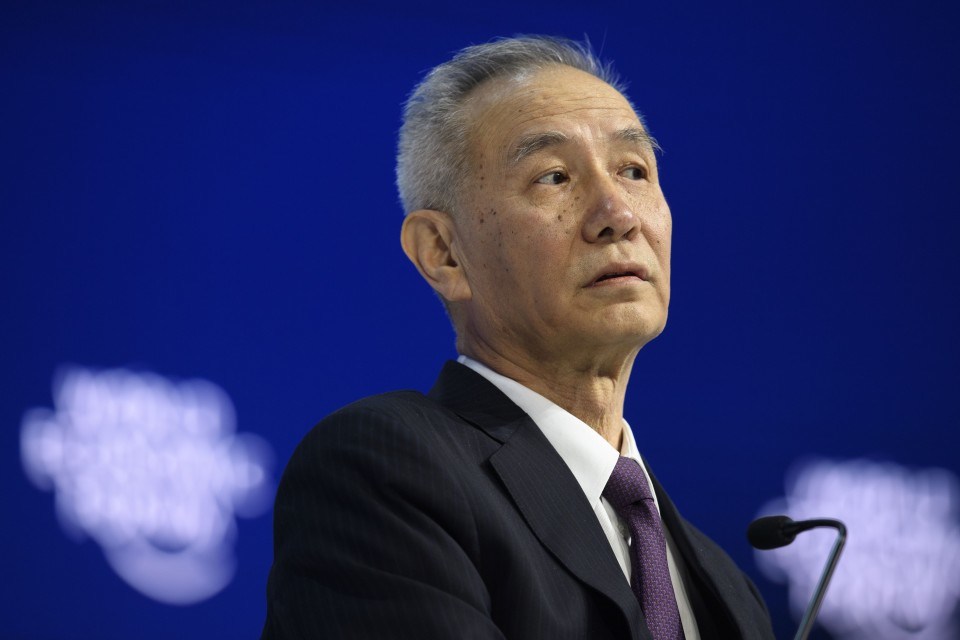Gordon G. Chang is the author of “The Coming Collapse of China.”
China’s trade delegation is in Washington this week, and for the last few days, Beijing has been telegraphing its negotiating position. In advance of these crucial talks, according to Chinese trade observers, China’s vice premier and top economic aide, Liu He, will offer market-opening moves and agree to step up purchases of American goods.
The leader of China’s negotiating team apparently has two bottom lines, however. First, Liu reportedly will not make a deal unless Washington agrees to lift its seven-year ban on the transfers of products and technology to ZTE Corp., the embattled Chinese telecom giant.
Second, and perhaps more important, Liu reportedly will not make any concessions on his country’s industrial policies, especially the “Made in China 2025” initiative. CM2025, as it is known in China, seeks to make China nearly self-sufficient in just a decade across 10 crucial industries, including aircraft, robotics, electric cars and computer chips.
Why is CM2025 non-negotiable? Because it is at the heart of Chinese President Xi Jinping’s industrial policy. And his industrial policy is at the heart of his plan to make China the world’s technological leader and to establish China as the world’s dominant economy. The willful Chinese ruler is letting nothing, including trade obligations, get in his way.
The breathtaking initiative looks like history’s biggest assault on the World Trade Organization. To achieve its ambitions, Beijing has rolled out large, low-interest loans from state investment funds and development banks, aid for the purchase of foreign tech companies, and research subsidies galore, some of which appear to be clear violations of WTO policies.
Worse, Beijing has also set out specific goals for market shares by industry, and the plan aims for near self-sufficiency in components by 2020 and in materials by 2025. These goals, on their face, have made China a WTO outlaw.
Beijing’s requirement that foreign companies hand over technology for market access contradicts WTO obligations. There are also government-procurement rules that look like breaches, as they favor the acquisition of Chinese-made tech, as well as market barriers subject to other challenges. Moreover, Beijing has, even before the formal beginning of CM2025, employed theft, much of it by cyber means.
Chinese officials betray guilty consciences. Beijing is reportedly using informal means to communicate policies to state enterprises that defy WTO commitments.
Chinese trade sins do matter, and CM2025 is the focal point. As Lorand Laskai of the Council on Foreign Relations writes, “In the saga of the U.S.-China economic rivalry, Made in China 2025 is shaping up to be the central villain, the real existential threat to U.S. technological leadership.”
China, Laskai notes, is seeking not to join tech-leading nations but to replace them. Recent Chinese offers for American companies to participate in CM2025 therefore seem insincere, if not outright dangerous. Beijing is determined to aid “national champions,” so there is no real place for outsiders.
There is now a consensus in Washington and other capitals that they must defend themselves against Chinese predation. Through various actions, such as targeting CM2025 with proposed tariffs, the Trump administration is trying to protect American innovation.
Few like tariffs, but the United States has an innovation economy and there is not much of a future for the country if China throttles American high-tech companies. Yet, Beijing will not change course unless penalties for violative conduct are sufficiently severe.
Americans need to understand the scope of Beijing’s threat. China is challenging more than foreign competitors. It is shaking the world’s rules-based trade order.
“The Made in China 2025 program shows that Beijing emphatically rejects the leading economic principle on which the current world trade system is based,” trade analyst Alan Tonelson told me recently. “The post-World War II effort to liberalize global trade makes sense only if major national economies accept the theory of comparative advantage.”
China, unfortunately, does not. It first wants self-sufficiency and ultimately dominance, and to obtain both, it is willing to do anything. To protect itself, the United States is bypassing the WTO with proposed Section 301 tariffs on $150 billion of Chinese goods.
The WTO’s dispute resolution mechanism, incredibly, encourages noncompliant behavior. Penalties are not imposed unless violations continue after adverse rulings. Beijing has taken advantage of this, putting in place violative practices and removing them after others inevitably win disputes. In the meantime, China wins.
How ineffective is the WTO? The United States has won every WTO trade case against China since 2004, but Beijing’s trade practices have markedly deteriorated nonetheless.
Some think Trump, in return for short-term concessions, will not impose Section 301 tariffs. Whatever decision he makes, China is openly violating WTO commitments with Made in China 2025 and thereby attacking the core of the American economy. At some point, whether now or later, Washington will have to confront Beijing. When it does, the WTO itself will be the first casualty.
This was produced by The WorldPost, a partnership of the Berggruen Institute and The Washington Post.





